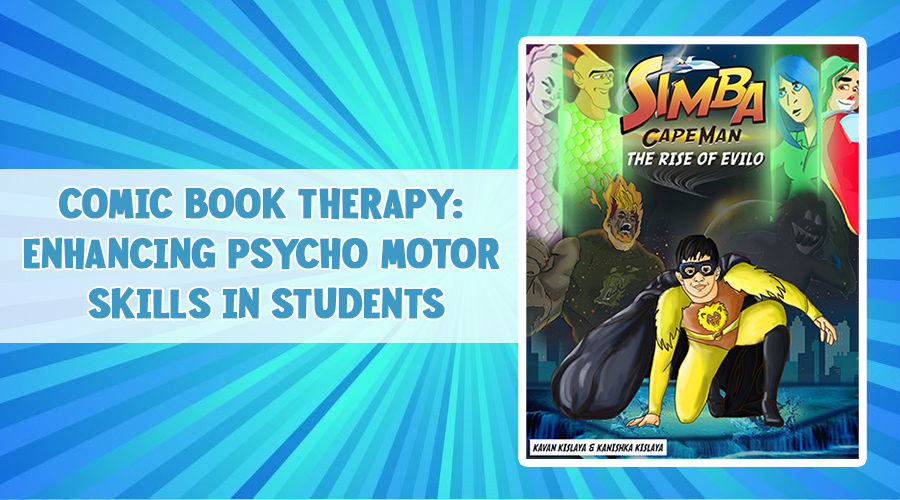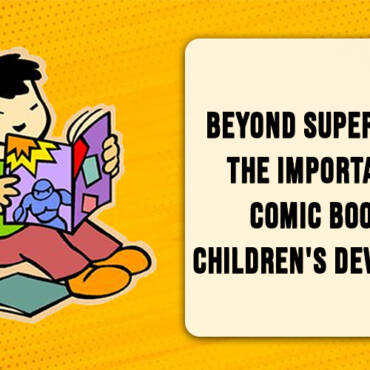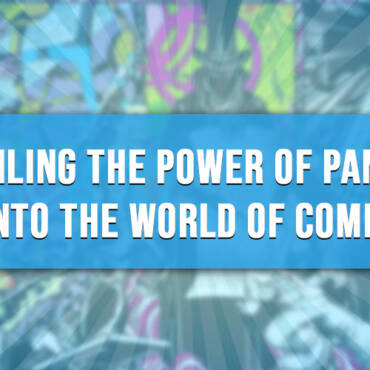Comic Book Therapy: Enhancing Psycho Motor Skills in Students
In today’s digital world, it’s easy to get lost in screens and forget about the importance of physical activities. However, there is one medium that has stood the test of time and continues to engage students in both mental and physical exercises – comic books. Often dismissed as a form of entertainment, comic books have been proven to have therapeutic benefits, particularly in enhancing psycho motor skills in students. In this blog post, we will explore how comic books can be used as a tool for improving fine and gross motor skills, coordination, and dexterity in students of all ages. So put down your devices and let’s dive into the world of comic book therapy!
Understanding Psycho Motor Skills: The Importance and Benefits
In today’s fast-paced and technologically-driven world, it is easy for students to prioritize screens over physical activities. However, it is crucial to remember the importance of developing psycho motor skills in students. Psycho motor skills involve the coordination of the mind and body, enabling individuals to perform tasks that require both mental and physical abilities. These skills are fundamental for daily activities such as writing, typing, tying shoelaces, and playing sports.
Enhancing psycho motor skills in students can have numerous benefits. First and foremost, it improves their overall coordination and dexterity. By engaging in activities that require both mental and physical involvement, students learn to synchronize their movements, leading to improved motor control. Additionally, developing psycho motor skills can positively impact students’ cognitive abilities, such as attention span and problem-solving skills.
Comic books offer a unique and effective way to enhance psycho motor skills in students. They combine visual and narrative elements, encouraging readers to actively engage in the story by using their imagination. As students follow the panels, their eyes move across the page, improving eye-hand coordination. Additionally, comic books often involve activities like coloring, tracing, or drawing, which further enhance fine motor skills.
By utilizing comic books as a tool for improving psycho motor skills, educators can tap into a medium that students already find engaging and entertaining. It not only fosters creativity and imagination but also helps students develop essential skills that will benefit them throughout their lives. So, let’s dive into the world of comic book therapy and unlock the potential for enhancing psycho motor skills in students of all ages.
Comic Books and Education: An Unusual yet Effective Pairing
When you think of education, comic books might not be the first thing that comes to mind. After all, they’re often seen as mere entertainment, not a tool for learning. However, comic books and education actually make an unusual yet effective pairing.
Comic books have a unique ability to capture students’ attention and engage them in a way that traditional textbooks simply can’t. The combination of visuals and narrative allows students to dive into a story and connect with the characters and plot. This immersive experience makes learning more enjoyable and memorable.
In addition, comic books promote critical thinking and literacy skills. Students have to decipher the dialogue, understand the plot progression, and analyze the visuals. This requires them to use their imagination, infer meaning, and make connections. These skills are essential for higher-level thinking and problem-solving.
Moreover, comic books can be a gateway to other forms of literature. Students who may not initially be interested in reading might find themselves drawn to comics, and from there, they can discover a love for books of all kinds. This is a powerful way to foster a lifelong love of reading and learning.
Overall, the combination of comic books and education is an unconventional yet effective way to engage students and promote learning. So, why not give it a try in your classroom? You may be surprised by the positive impact it has on your students’ education journey.
How Comic Books Develop and Enhance Students’ Psycho Motor Skills
Comic books offer a multitude of ways to develop and enhance students’ psycho motor skills. One of the primary ways comic books achieve this is through visual storytelling. As students read the panels and follow the progression of the story, their eyes move across the page, improving eye-hand coordination. This coordination is crucial for activities such as writing, typing, and even playing sports.
Additionally, comic books often involve activities like coloring, tracing, or drawing, which further enhance fine motor skills. These activities require students to use their hands in a precise and controlled manner, helping to develop their dexterity and coordination.
Another aspect of comic books that contributes to the enhancement of psycho motor skills is the interactive nature of the medium. As students engage with the story and characters, they are encouraged to use their imagination, infer meaning from visual cues, and make connections between panels. These cognitive processes involve both mental and physical engagement, improving overall coordination and cognitive abilities.
Furthermore, comic books provide an opportunity for students to practice sequential processing and visual sequencing skills. As they read and understand the order of the panels, they develop the ability to organize information in a sequential manner, a skill that is crucial for tasks such as following instructions or solving problems.
Practical Classroom Examples of Comic Book Therapy in Action
Comic book therapy can be easily implemented in the classroom, providing students with fun and engaging activities that enhance their psycho motor skills. Here are some practical examples of how comic books can be used in the classroom:
1-Storytelling and Sequencing: Assign students to create their own comic strips. This exercise not only encourages creativity but also helps them practice sequential processing and visual sequencing skills. Students can work on their fine motor skills as they draw and color their comics.
2-Character Creation and Illustration: Have students create their own comic book characters and illustrate them. This activity promotes fine motor skills development as students use their hands to draw and color their characters. Additionally, it encourages imagination and self-expression.
3-Comic Book Reading Circles: Create reading circles where students can share and discuss their favorite comic books. This allows them to practice their oral communication skills, while also enhancing their eye-hand coordination as they follow the panels and read the dialogue.
4-Comic Book Adaptations: Have students choose a favorite book and create a comic book adaptation of it. This activity not only develops their psycho motor skills through drawing and coloring, but also fosters critical thinking as they have to condense and summarize the story in a limited number of panels.
5-Comic Book Collaborations: Encourage students to collaborate on creating a class comic book. This promotes teamwork and social skills, as students work together to create characters, storylines, and illustrations. They can also take turns writing and drawing, which improves their coordination and dexterity.
These are just a few examples of how comic book therapy can be implemented in the classroom. By incorporating these activities, educators can tap into the unique benefits of comic books to enhance students’ psycho motor skills while fostering a love for reading and learning.
Future Scope: Adapting Comic Books for More Comprehensive Learning
As comic books continue to prove their effectiveness in enhancing students’ psycho motor skills, there is a wide scope for adapting them for even more comprehensive learning experiences. One area of potential growth is the integration of technology with comic books. By incorporating interactive elements, such as augmented reality or digital storytelling, educators can take the benefits of comic book therapy to new heights.
Imagine students being able to interact with the comic book characters in a virtual environment, solving puzzles and completing challenges that require physical movement. This would not only engage them on a whole new level but also provide an immersive experience that combines both mental and physical activities. Additionally, incorporating digital storytelling tools could allow students to create their own animated comic book narratives, further enhancing their psycho motor skills and creativity.
Another area of future scope is the development of specialized comic books tailored to specific motor skills or therapeutic needs. For example, there could be comic books designed to target fine motor skills in students with handwriting difficulties or gross motor skills in students with coordination challenges. These specialized comic books could be used as supplemental resources in occupational therapy or physical education programs, providing targeted interventions for students who need extra support.
Overall, the future of comic book therapy holds exciting possibilities for further enhancing students’ psycho motor skills. By embracing technology and tailoring comic books to specific needs, educators can create even more comprehensive learning experiences that engage students in both mental and physical exercises. So, let’s continue to explore and innovate in the world of comic book therapy to unlock the full potential of students’ psycho motor development.




Add Comment